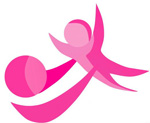Dr. Eric Harter
239-573-7988 (Chiro)
239-772-2266 (Neuropathy)
F: (239) 772-1017
Chiropractic for
Kids & Adults
Walk-ins Welcome!
Abundant Life Chiropractic
1260 NE 8th St #110
Cape Coral, FL 33909

Monday - Friday
8:00am - 6:00pm
Saturdays By
Appointment Only
Walk-ins Welcome!
Back Pain & Low Back Pain
Do you suffer needlessly from:
- Low back pain or Hip pain
- Leg pain with numbness, tingling and/or weakness?
- Back or leg pain with coughing or sneezing?
- Difficulty standing up after sitting for any period of time?
- Morning stiffness?
- Pain after extended walking?
- Pain in hip, buttock, thigh, knee or foot?
If you’ve answered "yes" to any of these symptoms, its time you got help from a chiropractor.
Low Back Pain Types
Low back pain is one of the most common complaints among chiropractic patients. 80% of all people will experience some type of back pain during their lifetime. Common causes of low back pain include problems with facet joints, paraspinal muscles, sacroiliac joints and the thoracic/lumbar discs.
There are two types of back pain. Discogenic back pain and mechanical low back pain. Mechanical low back pain is more common and is caused by the facet and sacroiliac joints. Discogenic back pain is caused by irritation to the vertebral discs and nerve roots.
Both types of back pain are due to your spine being out of the proper alignment or subluxated. When the spine subluxates, increased pressure is put on the nerves in the low back which causes low back muscles and ligaments to become tight or go into spasm. This is commonly called a lumbar spine sprain/strain.
What type of low back pain do I have?
Disc lesion with radiculopathy (sciatica)
An individual experiences low back pain and leg pain that travels below the knee, onset is sudden and is often caused by a bending and/or twisting maneuver. There is often a past history of several bouts of low back pain that has been resolved.
Facet Syndrome
An individual will often experience well localized low back pain with some hip/ buttock or leg pain above the knee.
The onset is often sudden after a simple misjudged movement or arising from a flexed position.
Canal stenosis
Individuals are often 50 years of age or older and experience back and/or leg pain.
The pain can be on one or both sides of the back and often covers a large area.
Patients also experience leg complaints with walking that are relieved by 15 to 20 minutes of rest or by maintaining a flexed posture.
Sacroiliac sprain and subluxation
An individual often experiences pain over one of the "SI joints" after straightening up from a stooped position, often while lifting an object.
The pain may radiate down the back of the leg. The pain is often described as a sharp and stabbing pain that is relieved somewhat by sitting or lying down.
Sciatica
The sciatic nerve is a combination of nerves that originate in your own and include the L3, L4, L5 and sacral vertebras.
Pain caused by sciatica originates in the low back or buttocks and travels past the knee into one or both legs.
Sciatica is often characterized by a sharp, shooting pain or pins and needles sensation that affects the legs and feet.
There are many different causes of sciatica. Disorders known to cause sciatic nerve compression/ sciatic nerve pain include
lumbar spine subluxations (misaligned vertebrae), herniated or bulging discs (slipped discs), nerve root irritation,
pregnancy and childbirth, tumors, and non-spinal disorders such as diabetes, constipation,
or sitting on one's back pocket wallet.
Piriformis Syndrome
Piriformis syndrome is one of the most common causes of sciatica and is named after the piriformis muscle.
The sciatic nerve runs beneath the piriformis muscle and is susceptible to injury from trauma, hip arthritis, or a difference in leg length.
All these conditions can cause cramping and spasm to develop increasing the pressure on the sciatic nerve.
Sciatic nerve compression may result in pain, numbness or tingling, paralysis of a single limb or group of
muscles, and loss of sleep due to symptoms.
How does it work?
Through chiropractic adjustments your body is given the opportunity to heal itself. That's because once the spine is properly aligned your entire nervous system can work the way it was intended. Health is restored naturally to your lower back and your whole body. Chiropractic is very successful at helping to alleviate and reduce all the symptoms of back, low back and sciatic nerve pain. Chiropractic adjustments will help realign your lumbar spine and pelvis, alleviating nerve interference which causes low back pain and numbness. Chiropractors have been recognized as experts in the field of low back and sciatic nerve problems for years and offer a drug free non-invasive approach to treating low back pain and sciatica. By receiving proper chiropractic care, you can prevent yourself from having to take unnecessary medications or receive unnecessary surgeries. Stop on by you will be amazed at the difference!
